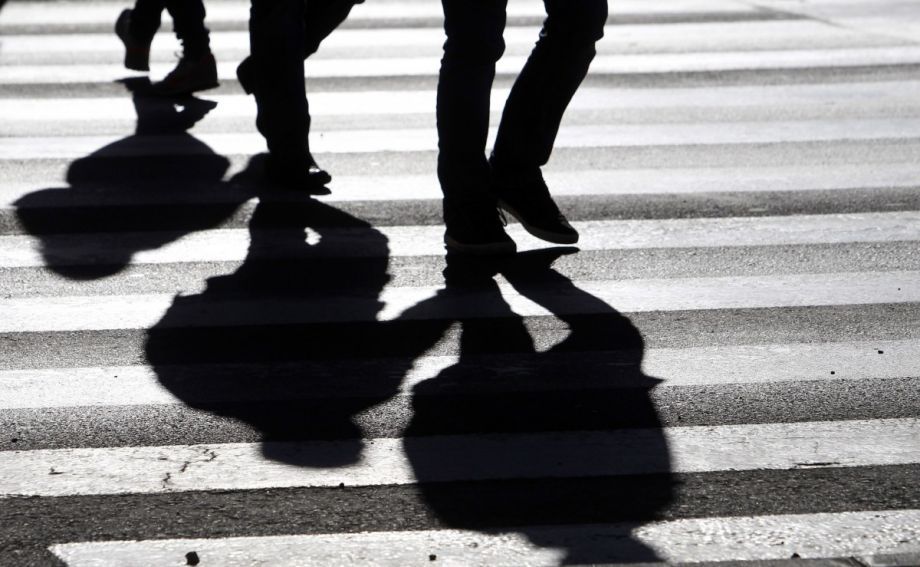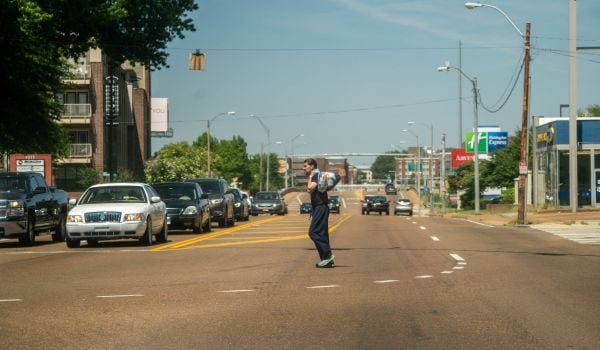In the wake of the Seattle Seahawks’ 2014 Super Bowl win, two groups of boisterous fans met on either side of a busy street. The light was red, and each group waited on a walk signal before rushing on, wooing and cheering. Captured in a video that went viral, the incident confirmed the city’s view of itself as too polite and law-abiding to jaywalk.
Anecdotally, at least, it does often seem like Seattleites are loath to flout pedestrian rules. Policing data seems to indicate it’s a somewhat rare occurrence — or at least a declining priority for officers.
In a recent analysis of Seattle municipal court records from 2010 through 2016, Seattle Times reporter Gene Balk found that the number of jaywalking tickets issued dropped from 463 in 2010 to 160 in 2016. But Balk found that one trend has remained consistent through the years: A disproportionate number of the tickets that have been issued have been given to African-American residents, who make up just 7 percent of Seattle’s population. Last year, African-Americans received 28 percent of jaywalking tickets, and from 2010 through 2015, they received at least 20 percent of tickets.
In response to the Seattle Times piece, Seattle City Council President Bruce Harrell released a statement saying the report highlights the importance of the city’s newly adopted “bias-free policing” policies and shows that, “we still have a lot of work to do to address how race affects decisions, both consciously and subconsciously.”
Council Member Lorena González wants to go further. In a city council briefing last week, she said she plans to not only investigate whether jaywalking ordinances actually reduce instances of jaywalking, but also whether Seattle should have the ordinance at all.
“I do have a lot of questions about whether we should be criminalizing jaywalking,” González said at the briefing. “This is a type of infraction that has disproportionate policing impacts on the black community, and I’m not sure what the public safety purpose is that we’re trying to accomplish by virtue of having these jaywalking laws.”
Neither Seattle Neighborhood Greenways Executive Director Gordon Padelford nor Transportation Choices Coalition Executive Director Shefali Ranganathan were willing to take official positions yet on whether the city should eliminate its jaywalking ordinance, but both say González is raising important questions about exactly why the city has the law in the first place.
“Is it to discourage a certain type of behavior, to promote safety? If the goal is safety and mobility, my question is, is the jaywalking ordinance the best way to accomplish that?” asks Ranganathan.
She argues that the city should instead channel resources toward improving pedestrian infrastructure and enforcement of speeding and impaired driving laws.
“Enforcement should be a last resort,” Padelford says. “Design safe streets first, do education campaigns second. You should only use enforcement in situations when behavior is endangering others. I’m more worried about people speeding down Rainier than the person crossing the street after looking both ways.”
According to the most recent Seattle Vision Zero progress report, the top contributing factors in serious and fatal crashes are distracted driving, impaired driving, speeding and a failure to yield to pedestrian right-of-way.
Ranganathan concedes that distracted pedestrians are sometimes a problem as well. But she says that conscious jaywalking can actually be safer than crossing with a signal in a crosswalk and trusting drivers to yield as they turn, or not blow through the red light.
“If I’m choosing to cross before the light turns green or crossing mid-block, I’m making a conscious decision to do it safely. How is it a good use of resources for the community to ticket people for that?” she says.
Beyond the question of safety and priorities, Ranganathan says, “if the ordinance has inadvertently become a tool for discrimination, that is something we as a community should be concerned about and the council should take a serious look at.”

Josh Cohen is Crosscut’s city reporter covering Seattle government, politics and the issues that shape life in the city.
Follow Josh .(JavaScript must be enabled to view this email address)
















